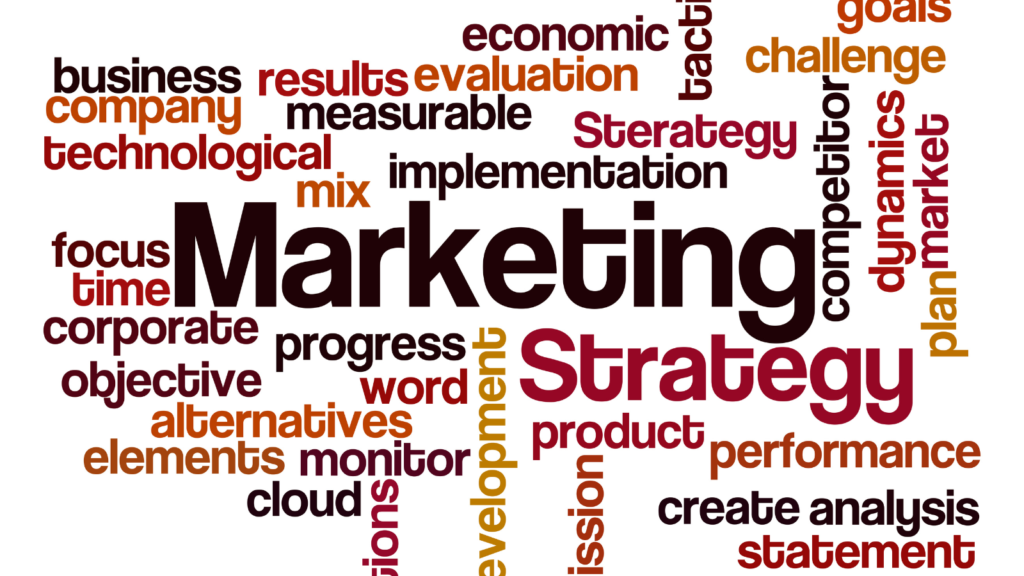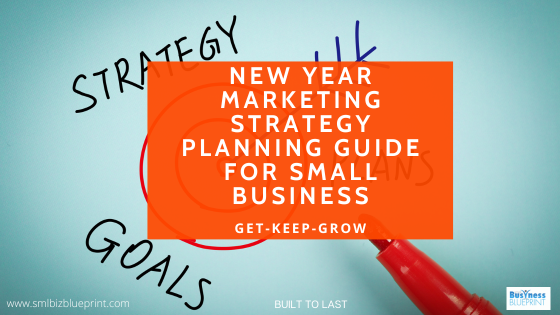Business owners must rethink and reshape their marketing strategies as we enter the New Year.
The onset of a new year isn’t just a change in the calendar; it presents a unique opportunity to redefine how your business connects with customers.
The digital landscape constantly evolves, and staying ahead requires awareness and action.
This comprehensive guide will take a strategic approach to reshaping your marketing plan for the upcoming year, focusing on actionable steps and expert insights.

Reflecting on the Past Year’s Marketing Efforts
The first step towards planning for success is understanding where you stand.
Begin by conducting a thorough analysis of your previous year’s marketing strategies.
Evaluate the campaigns and initiatives that generated significant ROI and understand the factors contributing to their success. Was it the timing, the channels used, or the messaging that resonated with your audience?
Conversely, identify areas where you fell short. This introspection isn’t about dwelling on failures but rather learning from them. Consider conducting surveys or focus groups to get direct feedback from your audience about what worked and what didn’t.
This reflection isn’t just about numbers; it’s about understanding the ‘why’ behind each success and hiccup.
Tips
- Conduct a SWOT Analysis: Assess your strengths, weaknesses, opportunities, and threats to understand your past performance better.
- Gather Customer Feedback: Use surveys or social media polls to get direct insights from your customers about what they liked or disliked.
- Review Analytics: Dive into your marketing analytics to see which campaigns performed best and why.
Understanding Emerging Marketing Trends
Next, dive into the emerging trends. Stay ahead of the curve by identifying and understanding emerging trends in the marketing world.
Are customers leaning towards more personalised experiences?
Is there a growing preference for sustainability in brand messaging?
Are chatbots becoming more prevalent in customer service?
Is there a shift towards video marketing?
For instance, with the increasing importance of video content, consider how your brand can utilise this trend effectively. It’s not just about following trends but innovating within them to stand out.
Tips
- Subscribe to Marketing Journals: Stay updated with the latest trends by subscribing to reputable marketing journals and blogs.
- Attend Industry Webinars/Conferences: Engage in webinars and conferences to learn from industry leaders.
- Experiment with New Channels: Test new platforms or marketing channels on a small scale to gauge their effectiveness.
Setting Clear and Achievable Marketing Goals
Effective goal setting is the cornerstone of a successful marketing strategy.
Utilise the SMART framework to set clear, attainable goals.
A SMART marketing goal is Specific, Measurable, Achievable, Relevant, and Time-bound.
Here’s an example:
Goal: Increase website traffic to improve online sales.
Specific: Increase the monthly traffic to the online store by 25%.
Measurable: Use analytics tools to track website visitors and sales conversions.
Achievable: Implement targeted social media advertising and SEO strategies to attract more visitors.
Relevant: More website traffic will likely lead to increased sales, a primary objective for most businesses.
Time-bound: Achieve this goal within the next six months.
This goal clearly outlines what needs to be achieved and how it will be measured, ensures that it is realistic, aligns with broader business objectives, and sets a deadline for achievement.
Tips
- Define Specific Metrics: Choose clear metrics like website traffic, conversion rates, or social media engagement to measure success.
- Break Goals into Smaller Steps: Divide your main goals into smaller, actionable tasks to make them more manageable.
- Review Competitor Goals: Analyze your competitors’ goals to understand industry benchmarks.
Integrating New Technologies and Platforms
Failing to leverage new technologies can be a setback in today’s digital age. Whether adopting a new CRM system or exploring emerging social media platforms, staying updated is key.
Incorporating new technologies and platforms can give you a competitive edge. For example, if AI and machine learning are shaping the marketing landscape, how can your business use these to deliver more personalised customer experiences?
Or, if there’s a rise in a new social media platform, determine if it aligns with your target demographic and how it can be included in your marketing mix.
Tips
- Explore CRM Tools: Invest in Customer Relationship Management (CRM) tools to better understand and manage customer interactions.
- Leverage Social Media Analytics: Use analytics tools social media platforms provide to tailor your content strategy.
- Experiment with AI: Implement AI for personalised marketing, like chatbots for customer service or personalized email marketing.

Focusing on Customer Engagement and Experience
The core of your marketing strategy should be customer engagement. This means creating content that resonates with your audience and building a community around your brand.
Creating a compelling customer experience is vital. It’s about crafting a journey that aligns with customer expectations and values. This could mean redesigning your website for a better user experience, creating more engaging and interactive content, or enhancing your customer service channels.
Your goal should be to make every interaction with your brand memorable and positive.
Tips
- Create Engaging Content: Develop content that informs, entertains, and engages your target audience.
- Enhance Customer Service: Improve customer service channels with quick response times and personalized support.
- Solicit Customer Feedback: Regularly ask for feedback and implement suggestions to improve the customer experience.
Budgeting Wisely for Your Marketing Plan
Strategic budget allocation is essential for maximising the impact of your marketing efforts. It’s not just about how much you spend, but how and where you spend it. Allocate more resources to the channels and strategies that have shown the best ROI
Allocate your budget in a way that supports your goals. Investing in SEO and digital advertising might take precedence if you aim to increase your online presence.
Consider investing in new areas that have potential based on your market analysis. A well-planned budget ensures that every dollar spent contributes towards achieving your marketing goals.
Remember, it’s not about how much you spend but how effectively you spend.
Tips
- Allocate Budget Based on ROI: Prioritize budget allocation to strategies that have historically shown the best return on investment.
- Set Aside a Contingency Fund: Reserve a portion of your budget for unexpected opportunities or market changes.
- Regularly Review Budget Spend: Monitor your budget monthly to ensure it aligns with your marketing objectives.
Building a Flexible and Adaptive Strategy
The market is unpredictable. Your strategy should have room for adjustment. This flexibility allows you to pivot as needed, ensuring your marketing remains effective irrespective of external factors.
The ability to adapt quickly to market changes is a mark of a resilient marketing strategy.
Develop a plan to pivot or adjust tactics in response to market dynamics, consumer behaviour changes, or unexpected challenges.
This flexibility can be a significant advantage in maintaining relevance and effectiveness in your marketing efforts.
Tips
- Conduct Regular Market Research: Keep abreast of market changes and adjust your strategy accordingly.
- Implement Agile Marketing Methods: Use agile methodologies to respond to changes and test new ideas quickly.
- Develop Scenario Plans: Create plans for different scenarios to adapt to unexpected market shifts quickly.
Tracking, Measuring, and Adjusting Your Strategy
Implement comprehensive tracking and measurement tools to evaluate the effectiveness of your marketing strategies.
Google Analytics, for example, can provide insights into website traffic and user behaviour.
Utilise metrics and KPIs to gauge performance against your goals.
Regular analysis of these metrics will show you where you’re succeeding and where you need to adjust your strategies for better results.
Tips
- Set Regular Review Meetings: Schedule monthly meetings to review marketing performance against set goals.
- Use A/B Testing: Regularly test different versions of your campaigns to determine what works best.
- Adapt Based on Feedback: Be open to changing your strategy based on customer feedback and market trends.
Key Takeaways:
Conduct a Thorough Analysis of Previous Marketing Efforts:
Business owners should start by rigorously evaluating their past marketing strategies. This involves analysing what worked and what didn’t, using tools like customer feedback, analytics, and a SWOT analysis. This step is crucial for understanding the successes and failures of past strategies and setting a more informed foundation for future efforts.
Set Clear, Achievable, and Measurable Goals:
Focus on setting specific, realistic, and quantifiable marketing goals for the year. Utilising the SMART goal framework, establish targets aligned with their overall business objectives, ensuring each goal has clear metrics for success and a defined timeline.
Embrace and Integrate Emerging Trends and Technologies:
This includes adapting to digital advancements like AI and data analytics, engaging with customers through contemporary mediums like video content and social media, and personalising marketing messages to resonate more effectively with their audience.

Outside-the-Box Insights
Leveraging Storytelling in Marketing:
Often underestimated, the power of storytelling can dramatically enhance a brand’s connection with its audience. Weave compelling stories into your marketing content, making your brand more relatable and memorable. This could involve sharing behind-the-scenes stories of the business, customer success stories, or the product development journey. Storytelling humanises the brand and can create a stronger emotional bond with customers.
Community Building Over Direct Selling:
Shift the focus from direct selling to building a community around your brand. This can involve creating forums social media groups, or hosting virtual events where customers can engage, share experiences, and provide feedback. This approach fosters a sense of belonging and loyalty among customers, which can lead to organic growth through word-of-mouth and customer advocacy.
Employee Advocacy:
Leverage your employees as brand ambassadors. Employees can share their positive experiences and insider perspectives on social media or through blogs. This boosts the organisation’s morale and provides authentic content that resonates with audiences. Employee advocacy can enhance the brand’s credibility and reach, as personal networks often have a higher engagement rate than traditional corporate channels.
To conclude, the key to a successful marketing strategy in the New Year lies in your ability to adapt, innovate, and focus on creating exceptional customer experiences.
By setting SMART goals, keeping abreast of emerging trends, and effectively using technology, your business is well-positioned for success.
Remember, the objective is to build lasting customer relationships by consistently delivering value and excellence.
FAQs
Q1: How can businesses effectively analyse past marketing efforts?
A1: To effectively analyse past marketing efforts, businesses should:
Review Key Performance Indicators (KPIs): Monitor conversion rates, website traffic, social media engagement, and return on investment (ROI).
Conduct a SWOT Analysis: Evaluate strengths, weaknesses, opportunities, and threats related to your past marketing campaigns.
Solicit Customer Feedback: Gather insights from customer surveys or reviews to understand their perception of your marketing efforts.
Q2: What are some current marketing trends businesses should be aware of?
A2: Current marketing trends to be aware of include:
Personalisation: Tailoring marketing messages to individual customer preferences and behaviours.
Video Content: Leveraging video content on social media and websites for higher engagement.
Sustainable and Ethical Marketing: Focusing on eco-friendly practices and ethical business operations in marketing messages.
Q3: How can businesses set achievable and impactful marketing goals?
A3: To set achievable and impactful marketing goals, businesses should:
Use the SMART Framework: Ensure goals are Specific, Measurable, Achievable, Relevant, and Time-bound.
Analyse Market and Internal Data: Base goals on thorough market research and internal performance data.
Align Goals with Business Objectives: Ensure marketing goals support the overall objectives and mission of the business.
Q4: What role does technology play in modern marketing strategies?
A4: Technology plays a crucial role in modern marketing strategies by:
Enhancing Customer Insights: Using data analytics tools to understand customer preferences and behaviours better.
Automating Tasks: Employ automation tools for email marketing, social media posting, and customer segmentation.
Improving Engagement: Utilizing interactive technologies like AR/VR, chatbots, and AI-driven personalisation to engage customers.
Q5: Why is customer engagement crucial in today’s marketing landscape?
A5: Customer engagement is crucial because:
Builds Brand Loyalty: Engaged customers are likelier to become repeat buyers and brand advocates.
Drives Word-of-Mouth Marketing: Satisfied customers often share their positive experiences, attracting new customers.
Provides Valuable Feedback: Engaged customers give feedback that can be used to improve products, services, and marketing strategies.




